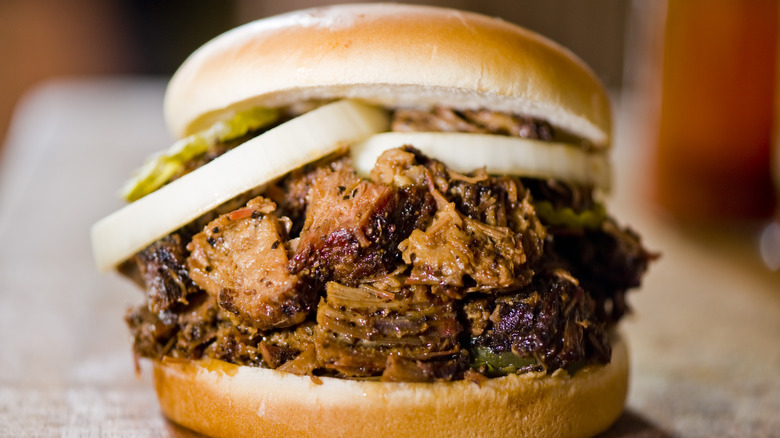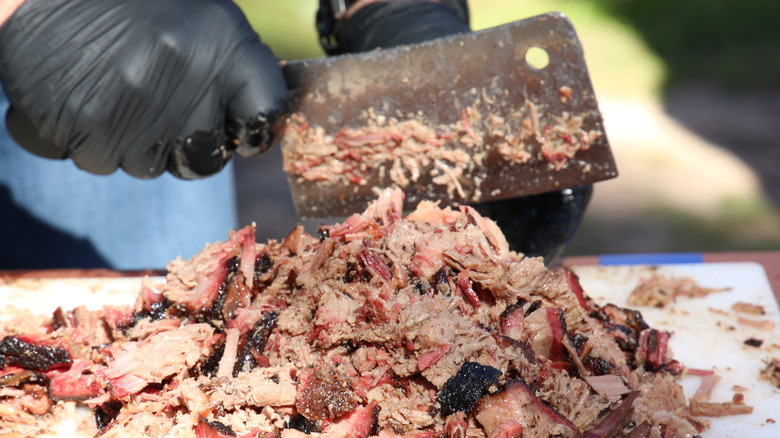The Key Tool For Chopping Brisket For A Meaty, Barbecue Sandwich
If there's one dish that lovers of all things barbecue can get behind, it's brisket. Best cooked low and slow, brisket bursts with savory, smoky flavor. Yet, while it is a delight to enjoy after its long awaited cook-time, carving it is not. Since the way in which the protein is sliced can directly impact tenderness and aesthetics, knowing which tool to use can seriously simplify the process. However, the reality is that there isn't one catch-all knife to get the job done. In the case of chopped brisket, one tool stands apart from the rest: the meat cleaver.
Unlike a chef's knife or a serrated knife, a cleaver bears a totally flat-edged blade, which greatly maximizes the cutting surface area. Likewise, a cleaver is also a lot heavier than most knives. This is precisely what makes it the ultimate tool for breaking down even the toughest cuts of meat — like lean brisket — into pieces. Yet, because the section of brisket reserved for chopping is usually fattier and prone to falling apart, the benefit of the cleaver lies really in its ability to effectively and efficiently produce even chunks of beef.
Why a meat cleaver makes all the difference
No two knives are quite the same. As a result, the proper choice to carve brisket depends largely on how you plan to serve the hunk of protein. For instance, a long and lean serrated knife will work to keep beef intact if the goal is to achieve perfectly uniform slices meant for fork-and-knife dining. But, this type of tool won't work in all brisket-serving scenarios. Chopped brisket that's destined to be piled into a saucy sandwich or loaded into tacos instead requires a knife that will make hacking away super easy — which is why we recommend using a meat cleaver.
To use the tool with confidence, simply lift the cleaver squarely above the brisket, letting the blade fall down onto the protein to complete the chop. Rather than use a rocking motion to continue, the trick is to pick up the knife in between cuts. Additionally, it's worth advising that for an especially melt-in-your-mouth result, it's wise to cut against the grain during the first few chops, before turning the cleaver perpendicularly and repeating the process.
Once chopped to your liking — for some textural variety, avoid near-mincing — all that's left to do is sauce up the decadent brisket with tangy barbecue sauce and serve it in a sandwich piled high with flavorful additions like a dollop of creamy coleslaw, zesty pickled onions, or candied jalapeño slices. But, we'll leave the toppings up to your discretion!

